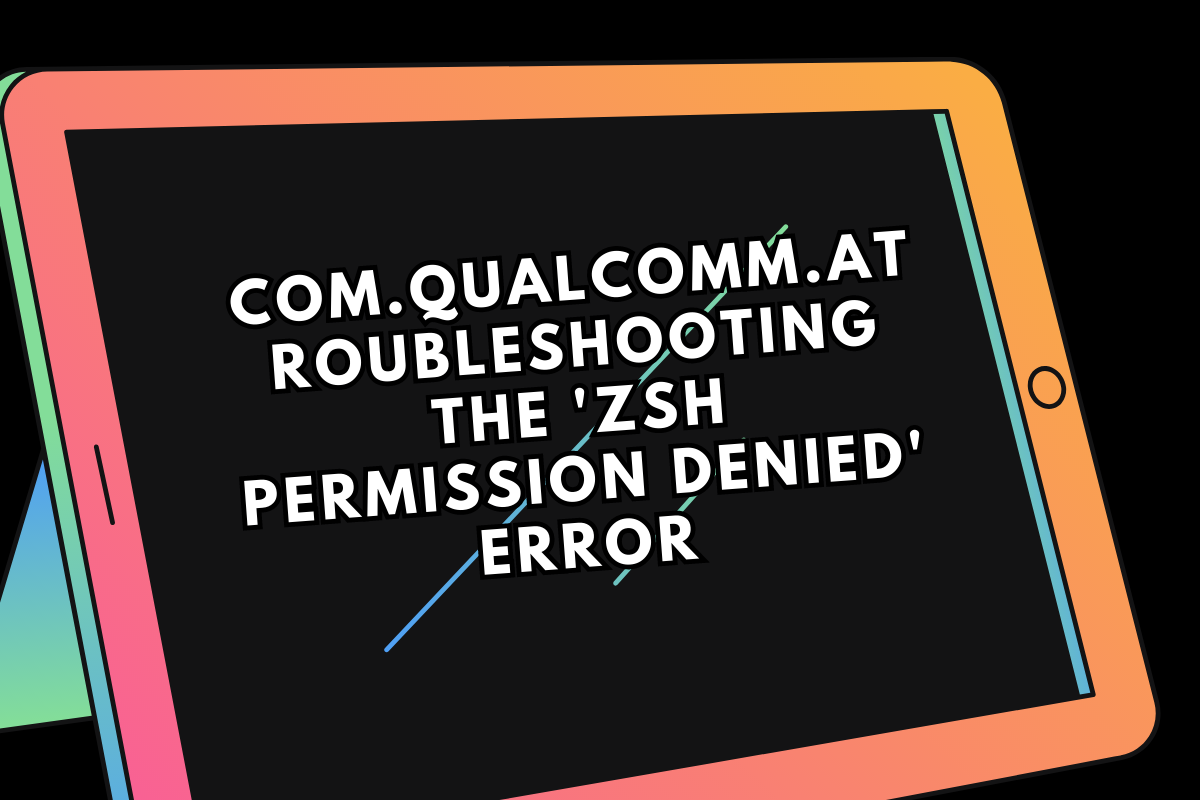Understanding the “zsh permission denied” error
I would like to discuss the common error message that many Zsh shell users encounter: “zsh permission denied”. This error message typically appears when users try to execute certain commands or scripts, and it can be caused by a variety of factors.
Common causes of “zsh permission denied”
One of the most common causes of the “zsh permission denied” error is incorrect file permissions. If the file or directory in question does not have the correct permissions set, users may encounter this error when trying to access it. Other possible causes include insufficient user privileges, problems with the zsh shell itself, or conflicts with other system components.
Resolving the “zsh permission denied” error
To resolve the “zsh permission denied” error, there are several steps that users can take. First, it’s important to ensure that the file or directory in question has the correct permissions set. This can be done using the chmod command, which allows users to modify file permissions to allow for reading, writing, and executing.
Another potential solution is to check the user’s current privileges and make sure that they have sufficient access to the file or directory. This can be done by checking the user’s group memberships and modifying them if necessary.
Finally, if all else fails, it may be necessary to troubleshoot the Zsh shell itself to identify any underlying issues or bugs that may be causing the “zsh permission denied” error.
Tips for avoiding the “zsh permission denied” error in the future
To avoid encountering the “zsh permission denied” error in the future, users should take care to ensure that they have the necessary permissions and privileges before attempting to access or modify files or directories. It’s also a good idea to regularly review and update file permissions to ensure that they remain accurate and up-to-date.
What is zsh permission denied in Kali Linux?
“zsh permission denied” is an error message that occurs in Kali Linux when the user does not have sufficient permissions to access a file or directory using the Zsh shell. This error can be caused by incorrect file permissions, insufficient user privileges, or issues with the Zsh shell. To resolve the error, users may need to adjust file permissions, modify user privileges, or troubleshoot the Zsh shell.
How do I fix permission denied in Terminal Mac?
If you encounter a “permission denied” error in Terminal on a Mac, there are several steps you can take to resolve the issue:
- Check the file permissions: Use the “ls -l” command to check the permissions of the file or directory in question. If the file or directory has incorrect permissions, use the “chmod” command to modify the permissions accordingly.
- Use sudo: If the file or directory requires elevated privileges to access, use the “sudo” command before the command that you want to execute. This will allow you to execute the command with administrator privileges.
- Change the ownership: If you don’t have permission to access a file or directory because it is owned by another user, use the “chown” command to change the ownership of the file or directory to your user account.
- Disable SIP: If you are trying to access a system file or directory that is protected by System Integrity Protection (SIP), you may need to disable SIP temporarily to gain access. Note that disabling SIP can potentially compromise the security of your system, so use this option with caution.
- Use Recovery Mode: If none of the above solutions work, you can try booting into Recovery Mode and using the Terminal there to fix the permission issue.
By following these steps, you should be able to fix the “permission denied” error in Terminal on your Mac.
How do I unlock Zshrc files on Mac?
To unlock the .zshrc file on a Mac, you can use the “chmod” command to modify the file permissions. Here’s how you can do it:
- Open Terminal on your Mac.
- Navigate to the directory where the .zshrc file is located by using the “cd” command. For example, if the file is located in your home directory, you can use the command “cd ~”.
- Once you are in the directory where the .zshrc file is located, use the “ls -l” command to check the current file permissions.
- Use the “chmod” command to modify the file permissions. For example, if you want to give read, write, and execute permissions to the file owner, you can use the command “chmod 700 .zshrc”.
- Check the file permissions again using the “ls -l” command to confirm that the file has been unlocked.
Note that unlocking the .zshrc file can potentially compromise the security of your system, so it’s important to be careful when making changes to this file. Make sure you understand the potential implications of modifying the file before you proceed.
Conclusion
In conclusion, while the “zsh permission denied” error can be frustrating and confusing for users, there are several steps that can be taken to resolve the issue and regain access to the requested file or directory. By understanding the common causes of this error and following best practices for managing file permissions and user privileges, users can avoid encountering this issue in the future and continue using the powerful and versatile Zsh shell with confidence.

